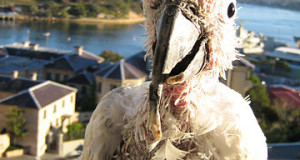The work showed that pigeons have a well developed sense of “self”, and can distinguish their own images from those of another pigeon after a delay of up to 7 seconds. This places them ahead of most human 3 year olds, who fail at self-recognition tests after a 2 second delay. Amazingly, the pigeons were also taught to distinguish the paintings of Van Gogh from those of Chagall – a task at which, I am embarrassed to say, I would likely fail!
Prior to these findings, only mammals with highly-developed brains, such as chimpanzees, elephants, dolphins and (possibly) dogs, were known to be capable of recognizing their own images.
In another interesting project, Rohr University Bochum (Germany) biologists were able to determine that pigeons moderated their choice of a large versus a small reward based upon how long it took for each reward to be delivered. The research revealed that pigeon impulse-control is regulated by a single forebrain neuron, and could have important implications for the treatment of addictive and attention-deficit related disorders in humans.
Parrots seem, at least on the surface, to exceed pigeons in their learning abilities – I imagine that we will eventually learn that they have other very advanced capabilities as well.
An interesting article concerning the similarities between how birds and people perceive the world around them is posted at:
http://www.sciencedaily.com/releases/2007/02/070220131646.htm
 That Bird Blog – Bird Care and History for Pet Birds
That Bird Blog – Bird Care and History for Pet Birds




